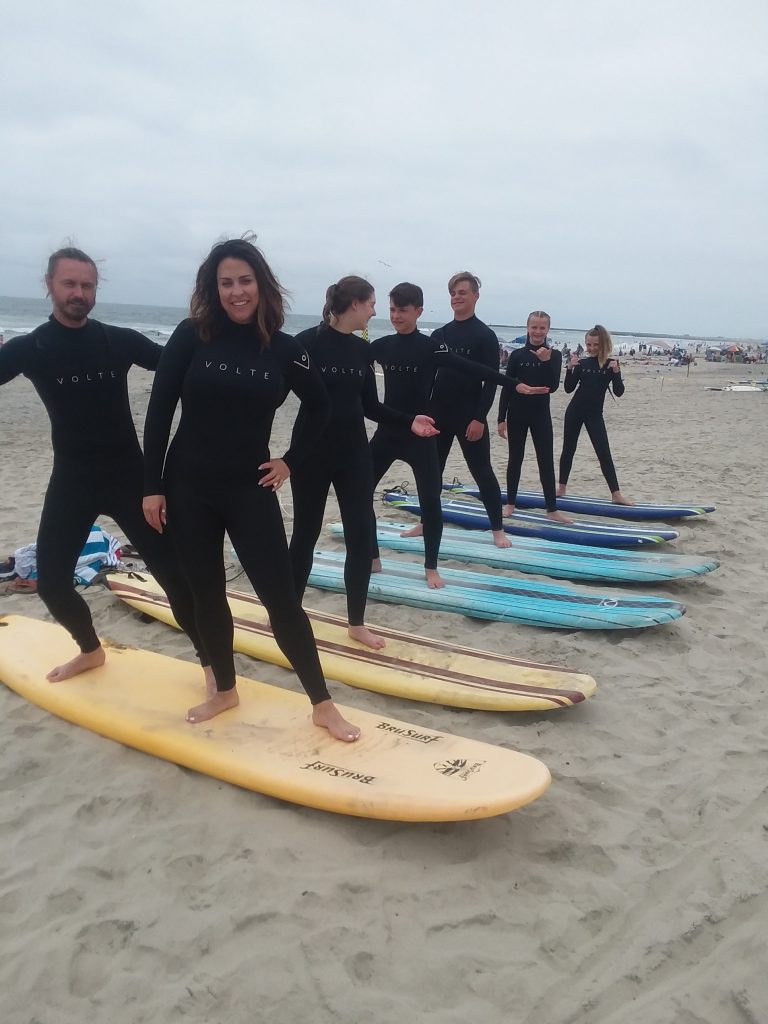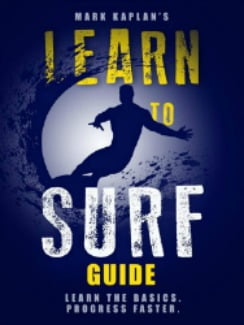Beginner Surfers Use Soft Top Surf Boards
Beginner surfers use soft top boards for a number of reasons. Its easy to mention safety because if a soft top board hits you while you are rolling around in the surf, it won’t hurt. Soft top boards are considered high volume so they make learning the techniques much easier.
A surfer who doesn’t surf often could use his soft top board all his life. The importance of having fun has to outweigh the importance of looking cool or surfers won’t continue. There are lots of surfers on soft tops in the line up riding real waves and they can be better than surfers on short boards.

The Fundamentals of Riding Soft Top Surf Boards
The soft top surf board is designed first of all to help beginners ride foam waves. They float above the water and so catch a foam wave easily. A low volume hard board like a short board won’t catch foam waves. They are meant for real waves which is way beyond a beginners experience.
Once a beginners has learned to catch and ride foam waves near the beach, they can paddle out to catch bigger foam waves and begin with small real waves. I start most teens and adults on a 9′ soft top surf board and as they master the techniques, move them to an 8′ soft top surf board. An 8′ soft top surf board has great capabilities. I have seen surfers on these boards doing most anything a short board surfer can do.
Paddling is the most tiring aspect of surfing. If a surfer does not visit the ocean often, he will not develop the stamina to paddle smaller volume boards. The fun of higher volume boards is you can surf longer because you don’t tire as quickly from the paddling. Soft top boards catch foam and real waves easily. When it is time to ride real waves, the soft top board is as good as a short board.
The only deficiency a surfer will find as he advances to expert is the maneuverability. A low volume short board will be easier to rip the lip and do other tricks the require fast and deep carving. A soft top surf board has thick rails so it is difficult to make a sharp carve without catching the edge. This hindrance may not show for a year or two of normal surfing for weekend warriors or vacationers.
When moving to shorter surf boards, the surfer would be wise to move shorter slowly. Maybe 6 inches at a time maintaining good width and thickness. One never wants to lose the fun or become frustrated because their skill is not commensurate with the design of the surf board.
Learn More
For Oceanside Surf Lessons, see the Home Page
See the Post Surf Lessons Begin with Foam Waves
See the Post What You Learn in a 2 Hour Lesson
See the Post How to Progress in Surfing
See My Dry Land and In Water Demo video
See How to Catch a Green/Real Wave video
i have lowered my book and course prices for the lock down.
My New Surfing Course in an E-Book plus Demo Video
Get the 18 Chapter, 7,500 word Course that can prepare you for a lesson or give you the fundamentals if you are going to try it on your own. 10 years of teaching 350 students a year has given me the insights on the most precise measures you must follow for success. This course is what I teach on the dry land and in water instruction. The Course includes a 15 minute video on my dry land and in water demonstration. Only $4.95
Buy the E-book for $2.99. Learn to Surf (Different cover but same book)
Buy the Paperback on Amazon $6.95
Get Learn to Surf Course in 29 minute audio. Great prep for a lesson, reviewing after a lesson, learning on your own, refreshing after not having surfed for a while. See Table of Contents. Only $7.95

80 page Learn to Surf Book
![Surf Instructions Beginner to Advanced: Learn to Ride Waves by [Kaplan, Mark]](https://images-na.ssl-images-amazon.com/images/I/51HswFtoBQL.jpg)